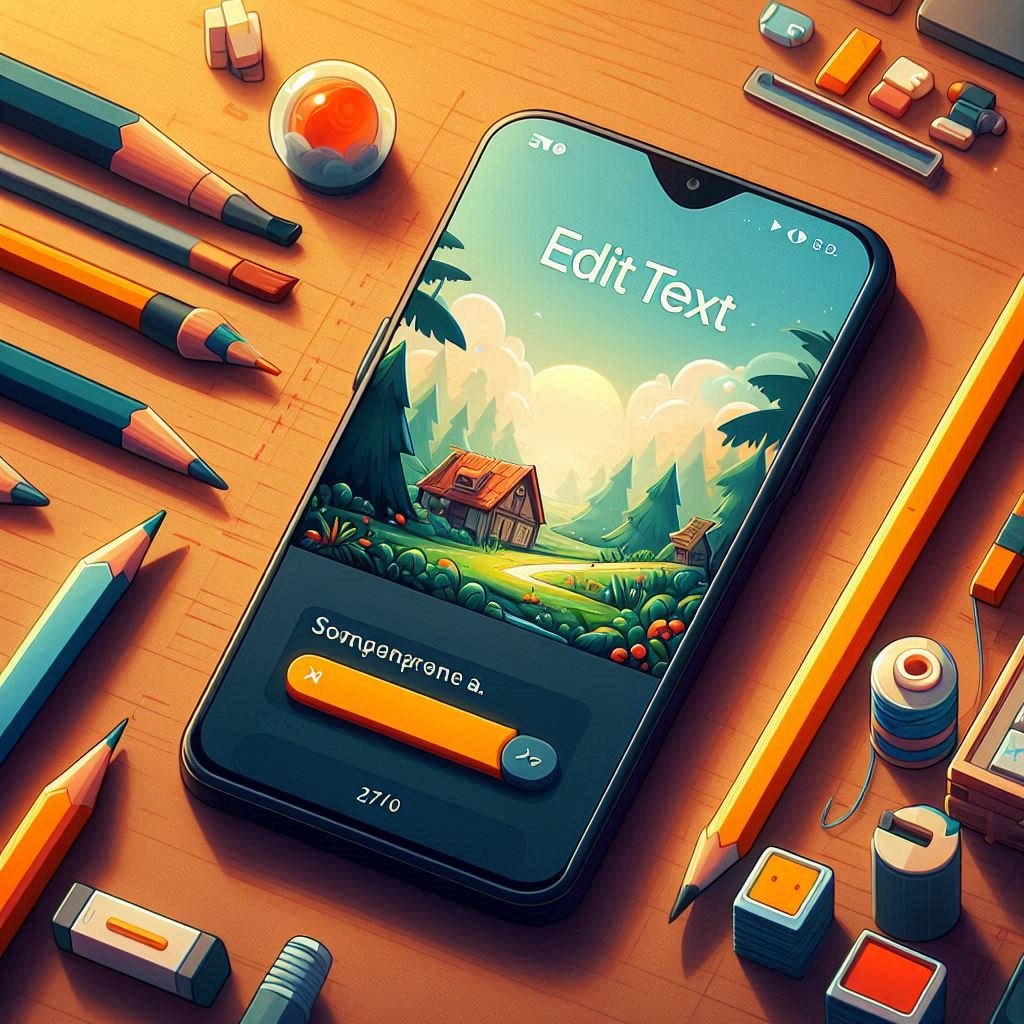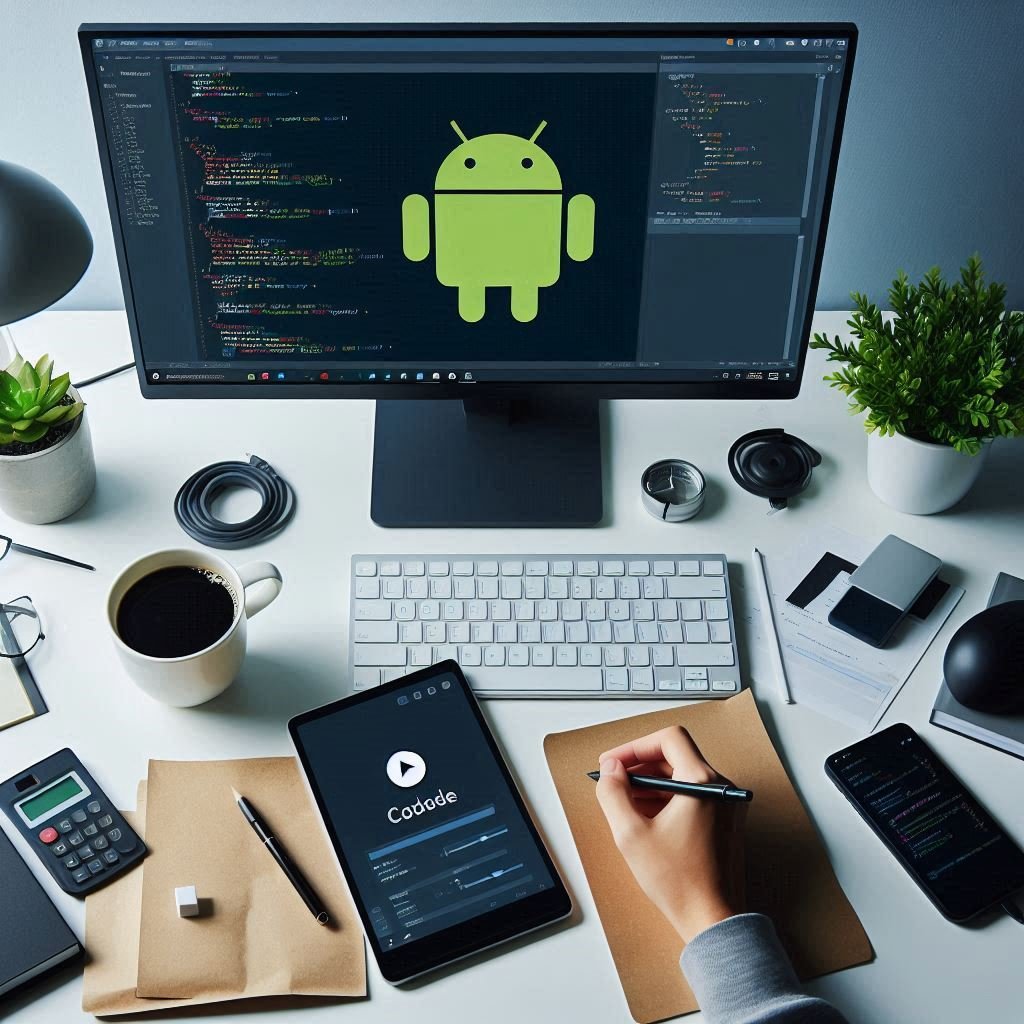
Guide to Using EditText in Android App Development with Java
In Android app development, EditText is a fundamental widget that allows users to enter and edit text. It’s versatile and widely used for various input fields, such as login forms, search bars, and other text entry points in an app. This article covers the basics of EditText, its properties, how to handle user input, and common use cases in Java.
1. What is EditText?
EditText is a subclass of TextView and serves as an editable text field. It enables user input, making it one of the most essential UI components for creating interactive applications. It supports various types of input, such as plain text, numbers, passwords, and email addresses, by configuring its properties in XML or Java.
2. Adding EditText to a Layout in XML
To add an EditText to your layout, define it in your XML layout file, typically activity_main.xml. Here’s a simple example:
<EditText
android:id="@+id/editTextExample"
android:layout_width="match_parent"
android:layout_height="wrap_content"
android:hint="Enter text here"
android:inputType="text"
android:textSize="16sp"
android:textColor="#000000"
android:textColorHint="#888888" />In this example:
android:idgives a unique identifier to access theEditTextin Java.android:layout_widthandandroid:layout_heightspecify the dimensions of the widget.android:hintprovides a hint inside the field when it’s empty.android:inputTypedefines the type of input (e.g., text, number).android:textSizeandandroid:textColoradjust the size and color of the text.
3. Using EditText in Java
After defining the EditText in XML, access it in your Java code to get or set its text content.
Example:
import android.os.Bundle;
import android.widget.EditText;
import android.widget.Button;
import android.widget.Toast;
import androidx.appcompat.app.AppCompatActivity;
public class MainActivity extends AppCompatActivity {
@Override
protected void onCreate(Bundle savedInstanceState) {
super.onCreate(savedInstanceState);
setContentView(R.layout.activity_main);
// Find EditText and Button by their IDs
EditText editTextExample = findViewById(R.id.editTextExample);
Button buttonSubmit = findViewById(R.id.buttonSubmit);
// Set up a button click listener to retrieve and display the entered text
buttonSubmit.setOnClickListener(view -> {
String inputText = editTextExample.getText().toString();
Toast.makeText(this, "Entered text: " + inputText, Toast.LENGTH_SHORT).show();
});
}
}In this code:
editTextExample.getText().toString()retrieves the input fromEditText.Toast.makeTextdisplays the text as a temporary message when the button is clicked.
4. Key Properties of EditText
EditText provides various properties that allow customization and control over its behavior. Below are some commonly used properties:
- Input Type: Controls the type of keyboard shown to the user.
android:inputType="text": General text.android:inputType="number": Numeric input only.android:inputType="textPassword": Masks the text for passwords.android:inputType="textEmailAddress": Optimizes the keyboard for email input.- Hint:
android:hintprovides placeholder text to guide the user. - Max Length:
android:maxLengthlimits the number of characters. - Text Style:
android:textStyle="bold"for bold text, or “italic” for italic.
Example of setting properties in XML:
<EditText
android:id="@+id/editTextEmail"
android:layout_width="match_parent"
android:layout_height="wrap_content"
android:hint="Enter your email"
android:inputType="textEmailAddress"
android:maxLength="50" />5. Handling Text Changes with TextWatcher
To detect changes in EditText as the user types, use TextWatcher. It provides three methods that detect changes before, during, and after the text changes.
Example:
import android.text.Editable;
import android.text.TextWatcher;
import android.widget.TextView;
public class MainActivity extends AppCompatActivity {
@Override
protected void onCreate(Bundle savedInstanceState) {
super.onCreate(savedInstanceState);
setContentView(R.layout.activity_main);
EditText editTextExample = findViewById(R.id.editTextExample);
TextView characterCountView = findViewById(R.id.characterCountView);
// Add a TextWatcher to update the character count
editTextExample.addTextChangedListener(new TextWatcher() {
@Override
public void beforeTextChanged(CharSequence s, int start, int count, int after) {}
@Override
public void onTextChanged(CharSequence s, int start, int before, int count) {
characterCountView.setText("Character count: " + s.length());
}
@Override
public void afterTextChanged(Editable s) {}
});
}
}In this code:
onTextChangedupdates the character count every time the user modifies the text.
6. Customizing EditText Appearance
To create a more appealing EditText, customize its appearance using properties like background, padding, and textColor.
Example XML:
<EditText
android:id="@+id/editTextCustom"
android:layout_width="match_parent"
android:layout_height="wrap_content"
android:hint="Custom styled EditText"
android:background="@drawable/custom_edittext_background"
android:padding="12dp"
android:textColor="#333333"
android:textSize="18sp"
android:fontFamily="sans-serif" />With customizations, EditText can match your app’s design aesthetics while remaining functional.
7. Making EditText Read-Only
Sometimes, EditText fields are used for displaying text without allowing user input. In such cases, set EditText to read-only mode.
XML Method:
<EditText
android:id="@+id/editTextReadOnly"
android:layout_width="match_parent"
android:layout_height="wrap_content"
android:text="This is read-only text"
android:editable="false"
android:focusable="false" />Java Method:
editTextReadOnly.setEnabled(false);8. Validating User Input
Validating input is essential for fields like email, phone numbers, and passwords. For example, email validation can be done using Patterns.EMAIL_ADDRESS.
Example of email validation:
import android.util.Patterns;
import android.widget.Toast;
public void validateEmail(EditText editTextEmail) {
String email = editTextEmail.getText().toString().trim();
if (email.isEmpty() || !Patterns.EMAIL_ADDRESS.matcher(email).matches()) {
Toast.makeText(this, "Invalid email address", Toast.LENGTH_SHORT).show();
} else {
Toast.makeText(this, "Valid email", Toast.LENGTH_SHORT).show();
}
}9. Handling Multiline EditText
To enable multiple lines in EditText, set android:inputType to textMultiLine. You can also control the minimum and maximum lines.
Example:
<EditText
android:id="@+id/editTextMultiline"
android:layout_width="match_parent"
android:layout_height="wrap_content"
android:hint="Enter multiline text"
android:inputType="textMultiLine"
android:minLines="3"
android:maxLines="5"
android:gravity="top|start" />10. Conclusion
EditText is a fundamental widget for capturing user input in Android apps. By using its properties effectively, you can control the appearance, behavior, and type of input to meet your app’s requirements. With proper handling in Java, including input validation and text change listeners, you can create a robust and user-friendly interface. Understanding and mastering EditText opens the door to building interactive, form-based apps that enhance user engagement.


